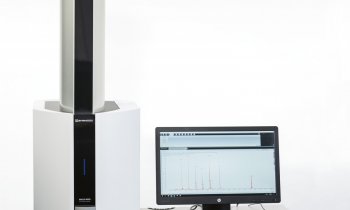ITALY
Bologna - The University Hospital S.Orsola-Malpighi has 1,800 beds and is one of the largest to install the DNLab management system. With 150 workstations connected to the LIS and over 50 analysers, each day, the two laboratories (central and microbiology) receive almost 3,000 orders and carry out over nine million tests annually. Hospital wards and departments are connected via Web to the LIS for on-line data entry, result delivery and retrieval of diagnostic information from the data repository.

Doctor Roberto Motta who was responsible for the computerization of the Central Laboratory, pointed out that the pre and post-analytical phases are perhaps the most problematic to deal with, and in these the system has provided ‘great satisfaction’. With two pre-analytical instruments perfectly integrated with DNLab, the work of technical operators, and sample preparation times from the analytical phase, have been consistently reduced. Dr Motta also said the team is particularly proud of its system of quality control. This is integrated with the administration of instrumentation but independent of it, and operates in real time, verifying the analytical quality through customisable algorithms (analyte by analyte) and guaranteeing the fastest intervention times on the very same analytical quality. ‘In the post-analytical phase, DNLab helps us with a system of validation of results based on an expert system which warns the validator according to pluri-parametrical personalised rules that concern one or more analytes and the information concerning the patient included in the requests, as well as the normal acceptability, pathology, plausibility and deltacheck tests. This system was born in our laboratory and is the result of our joint work with Dianoema and the DEIS of the University of Bologna.’
Over 200 medium-large Italian hospitals use the laboratory information system (LIS) DNLab, produced by the Dianoema Corporation (est. 1996), which today is probably the leading producer of web applications for healthcare in Italy. Thus DNLab automatically connects about 2,000 analysers and handles over 300 million tests and 25 million medical reports annually.
The system manages continuous and real-time analytical activity by immediate programming of the analysers. Analyses are carried out parallel with order entry. Every sector and workstation can apply its own organisation model - for work schedules or modalities. Using priority settings, the system optimises the management of emergency and routine patients, providing analytical activity in real time, throughout a 24-hour day, without the need to change data for work schedules. The system administrator can define and customise priority levels.
STAT as well as routine samples can be placed in the same analysers, because the assigned priority level automatically guarantees that urgent samples are tested first.
The system’s architecture and application software enable management of very complex situations with different laboratories, thus minimising costs and improving productive processes, even in dynamic situations such as organisational restructuring. On the same database, work configurations and data from different laboratories can co-exist, without crippling and narrowing limits for coding data. The ‘unified’ admission point distributes orders to the appropriate laboratories (distribution criteria can be customised for client needs).
Each sample is assigned a unique ID (bar-code) that contains, among other data, the case and collection time, which is fundamental for automatic tube despatch to the computerised systems. In addition, the possibility of precisely identifying all the elements involved in the analytical process supports the adoption of quality rules applied to specimen collection and treatment. Different Sample ID methods can co-exist, which allows different work modalities and sample management.
Configuration changes can be applied immediately, without interrupting lab workflow. So intervention is possible if events require changes in operative modalities. The parameterisation process is driven by validation and control functions, which allow safekeeping of system configuration congruence whenever changes are made. The system records main configuration parameters to provide complete report reproducibility for years, even after analyses are modified, or the workflow or analysers are no longer the same.
DNLab completely integrates microbiology management with the LIS, and allows elaboration of results from bacterial investigations for epidemiology. It also provides complete support for results validation with the control of a range of acceptability and pathology, the ¥delta check¥ and plausibility control. The opportune parameterisations are predisposed to individualise and manage the characteristics of control samples, and these are treated as real patient samples to make the control more precise.
Functions are available for periodical off-line archiving or export of data to other systems. The last function exports data to the inter-laboratory quality control management system on a regional basis. In addition, the system can be integrated near its own modules, to manage quality control and external modules, for example the Statistical Quality Control UNITY for Windows, by Bio-Rad.
The DNLAB System has a high security level. Many system functions are configurable for every installation, for which the user selects the security level. Users’ personal identification codes and passwords can be modified periodically.
Automation - Its introduction implies laboratory re-organisation because it affects the preliminary phase of sample processing and influences successive phases. For significant benefits, the pre-analytical phase should be integrated with the rest of the laboratory. The laboratory information system (LIS), which unifies and integrates pre-analysis, analysis execution, workflow control and supervision systems, permits the co-existence of analysers from different manufacturers by passing necessary data to the different areas. The system can provide an open solution for these and enables management of different pre-analytical machines by using qualified checking procedures.
The adoption of ODBC standard (Open Database Connectivity)/SQL (structured query language), and Open-System/Client Server architecture allows independence from the database and makes integration with the hospital information system (HIS) and national healthcare system (CUP, general practitioner, etc) easier. Various integrations are possible, if isolation of the lab system from the HIS is avoided.
With this system in a Web environment, integration with the laboratory is possible using a common browser: application software is not needed on the PC that sends or requests data to/from the lab.
07.08.2006











